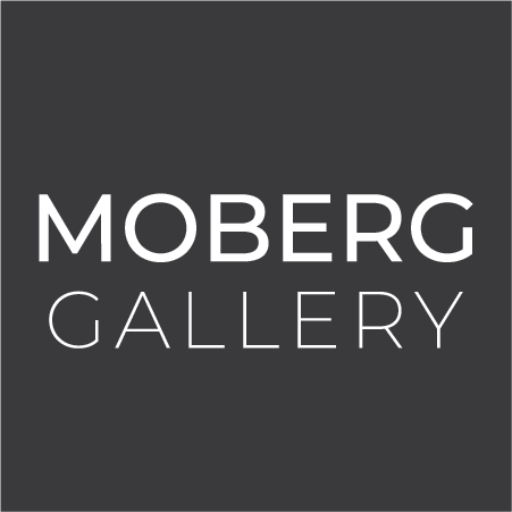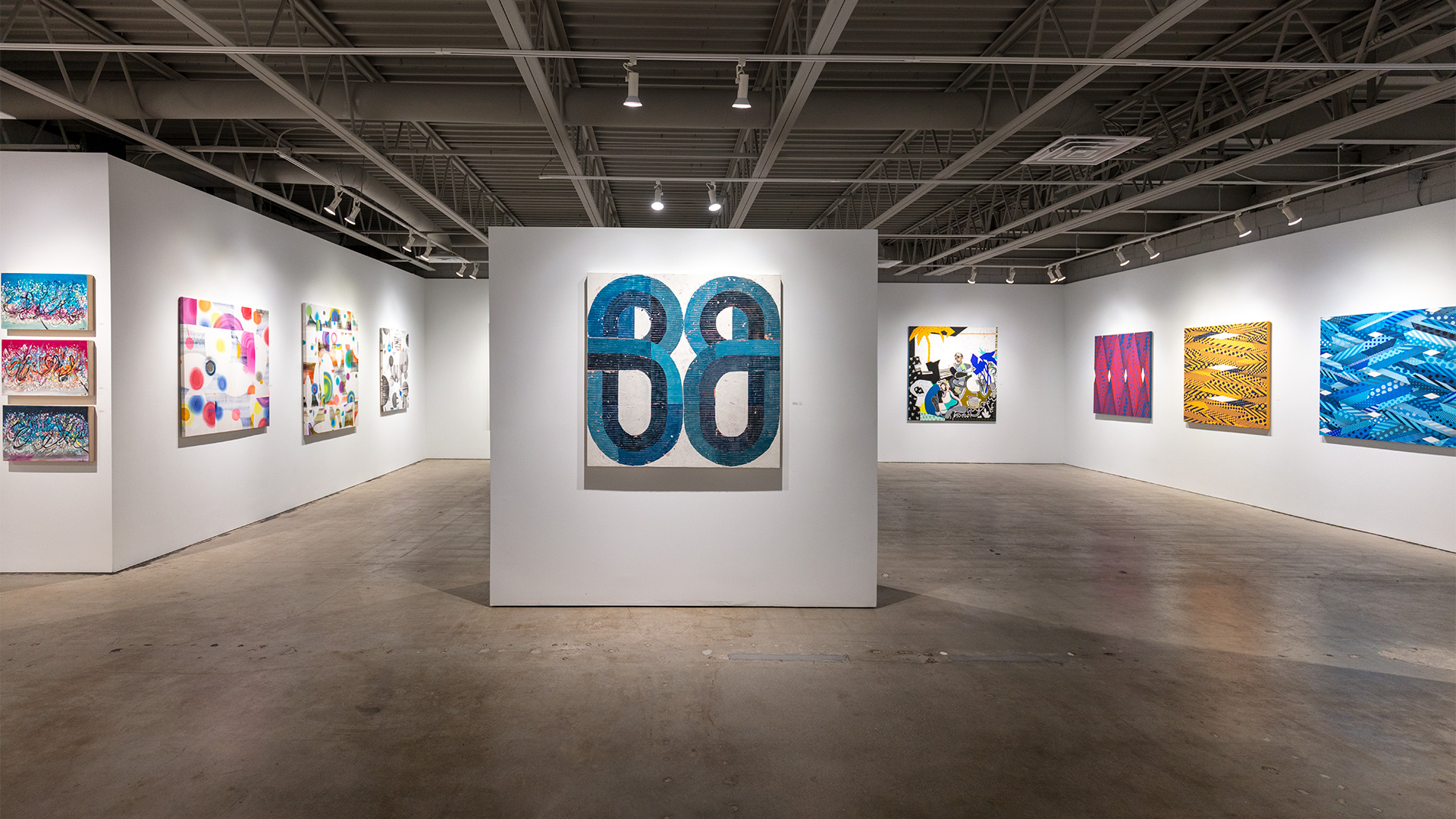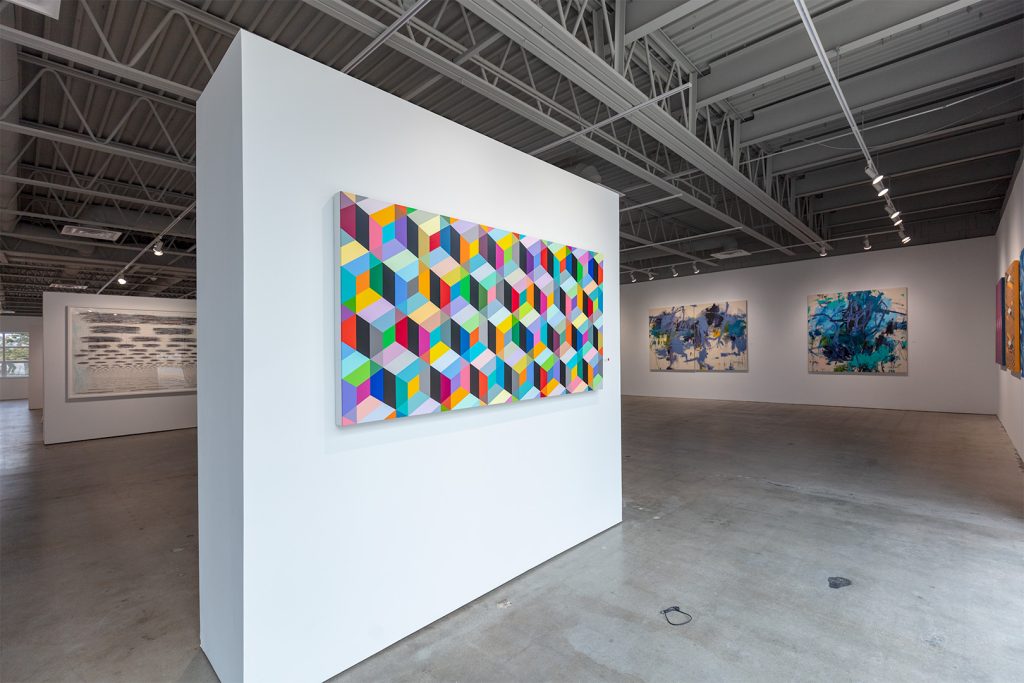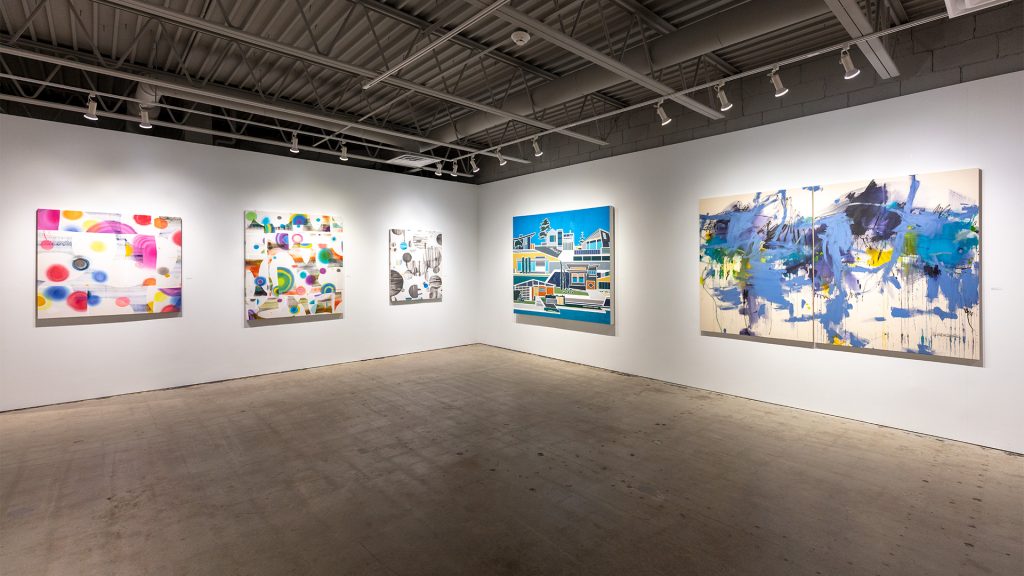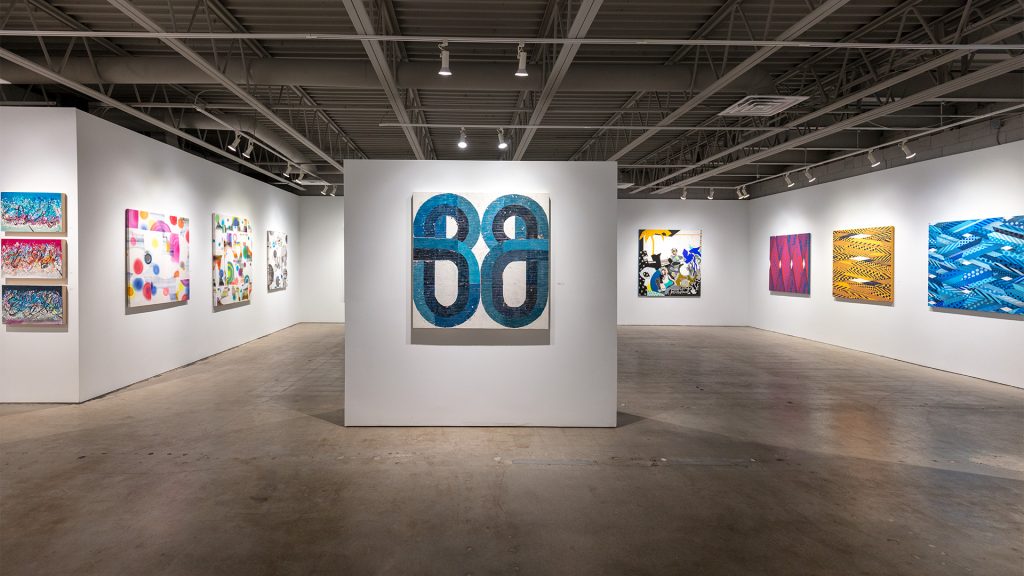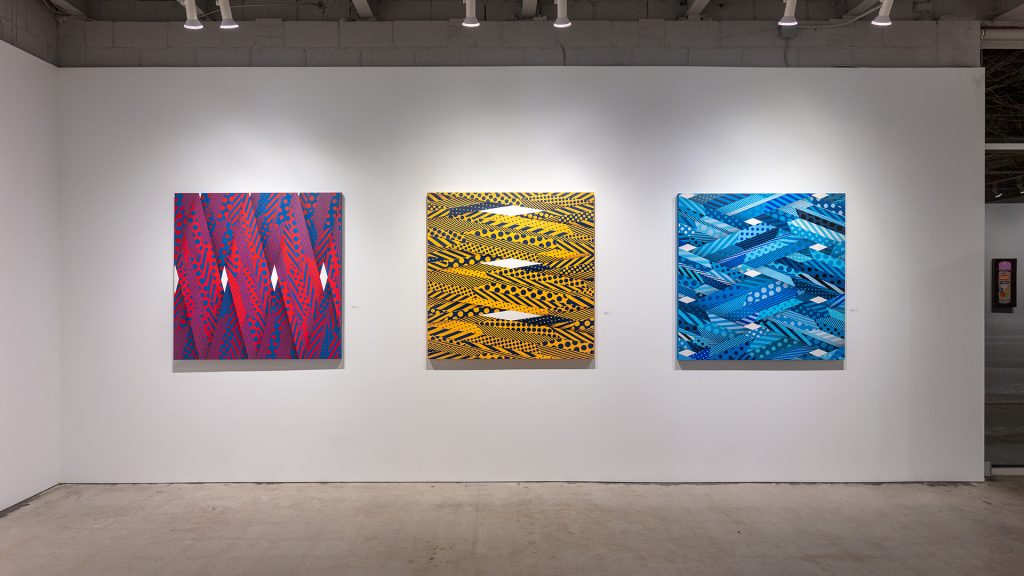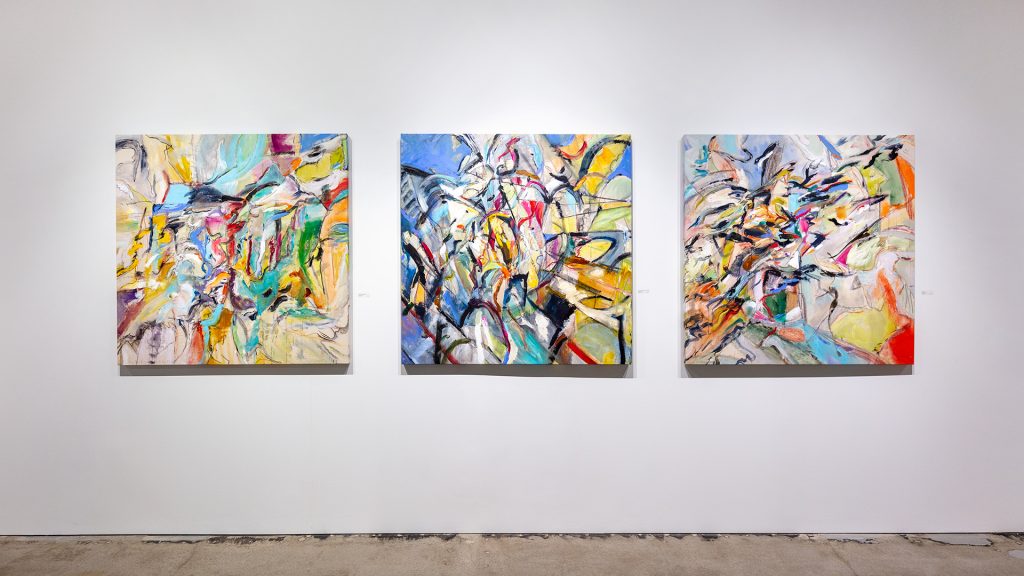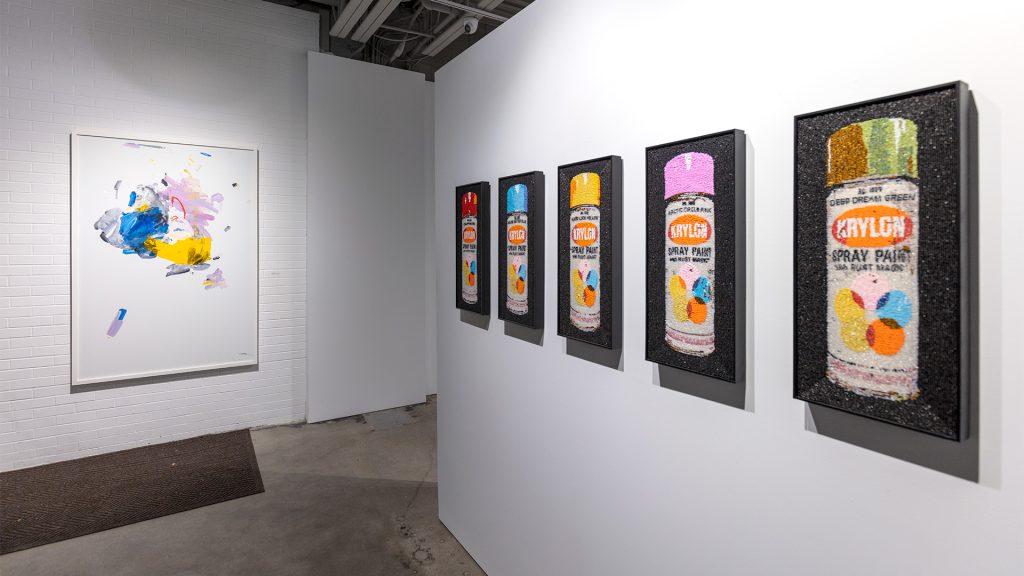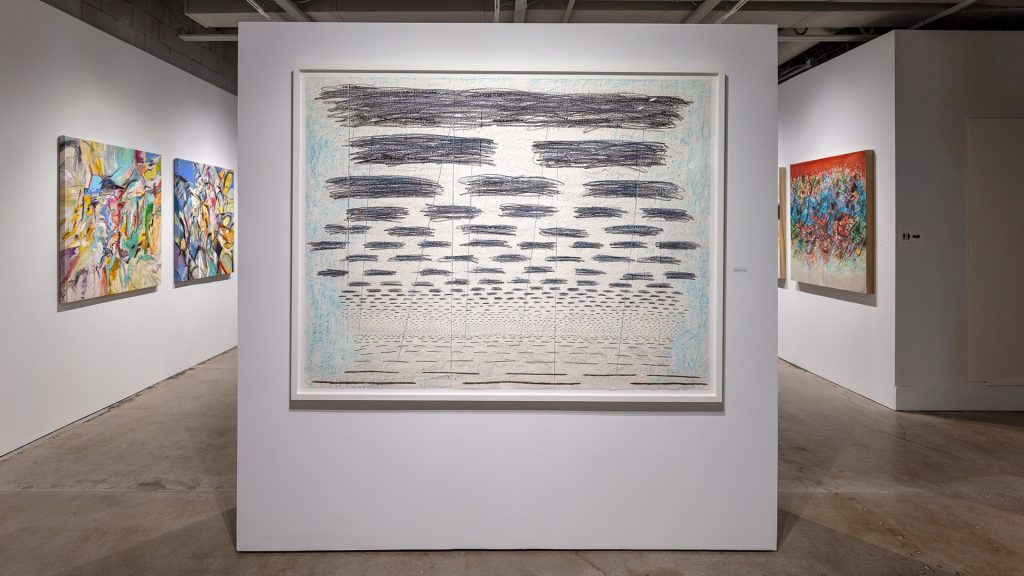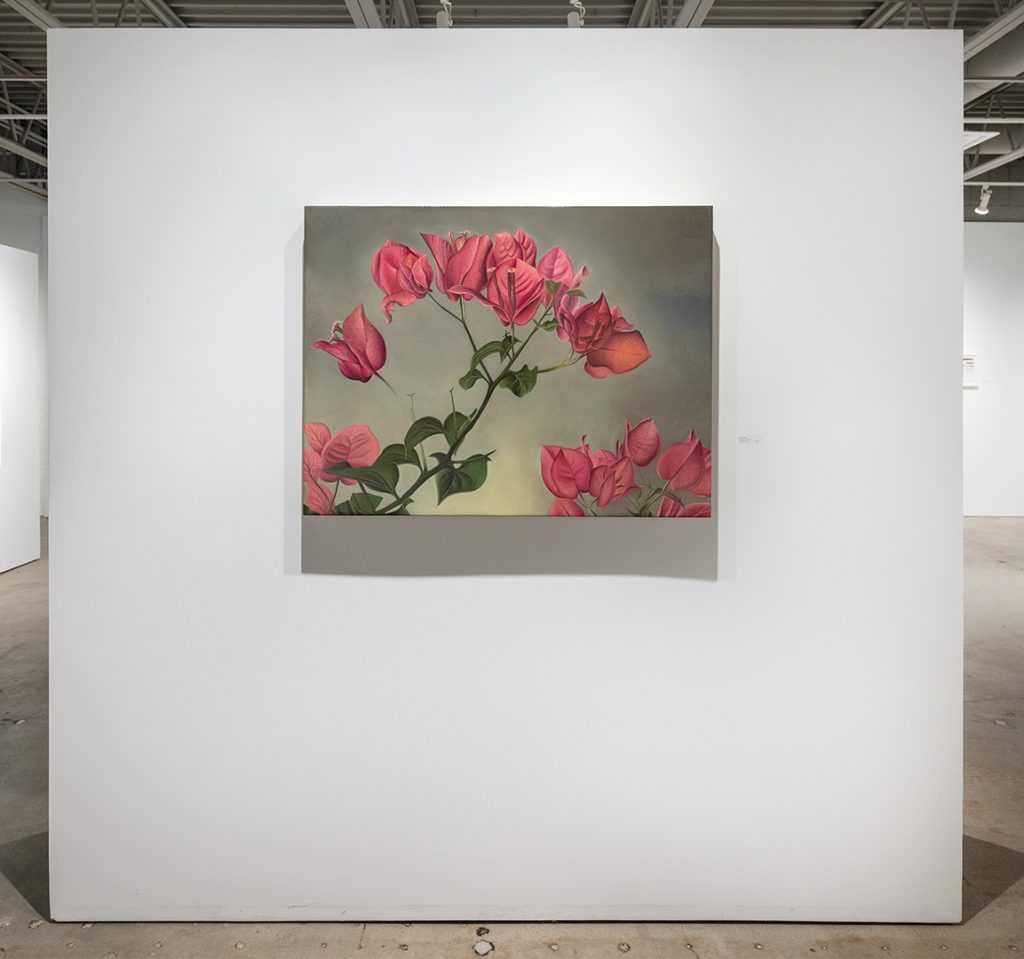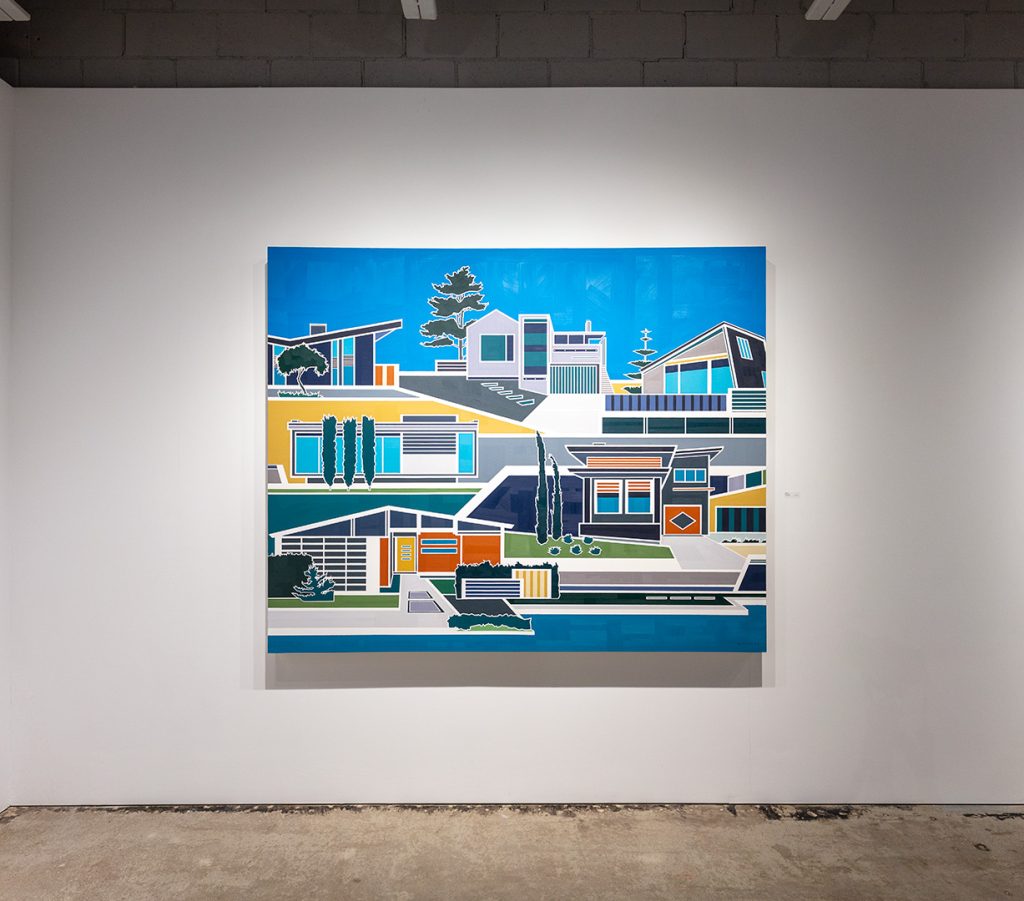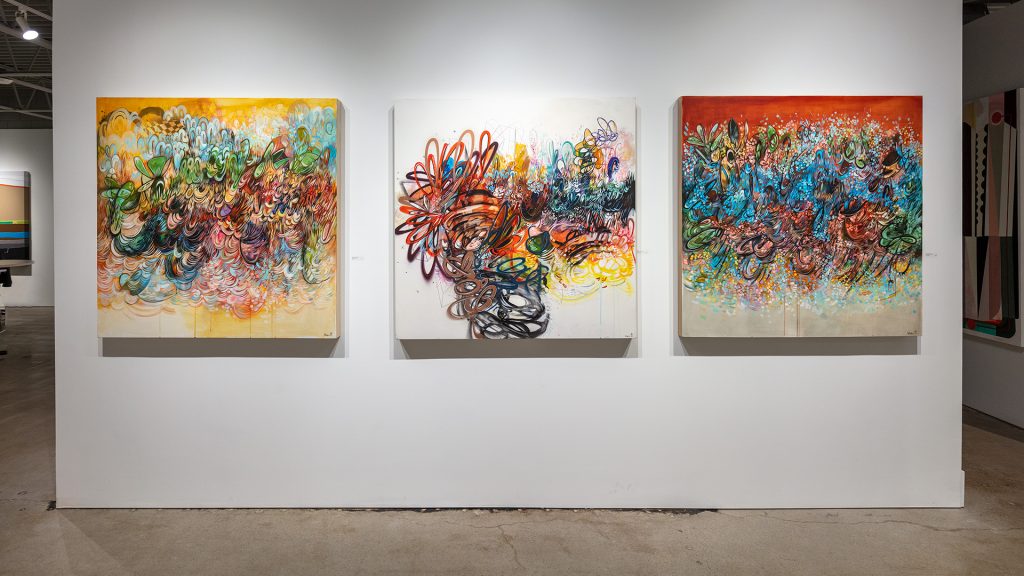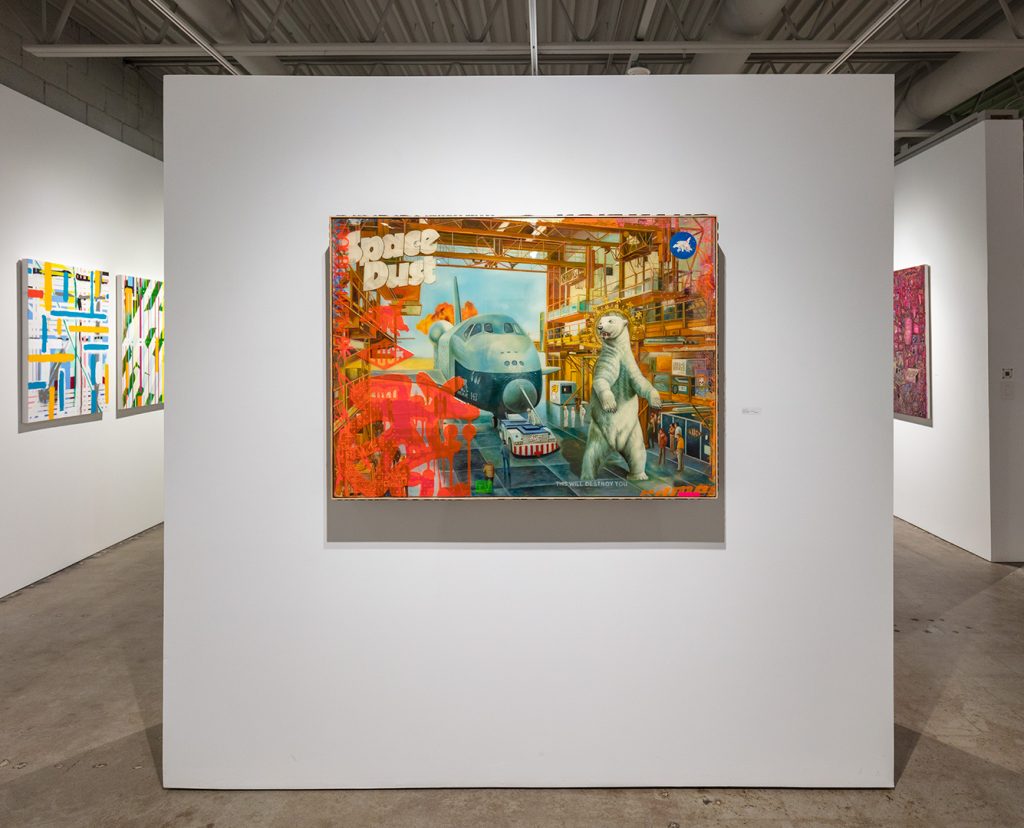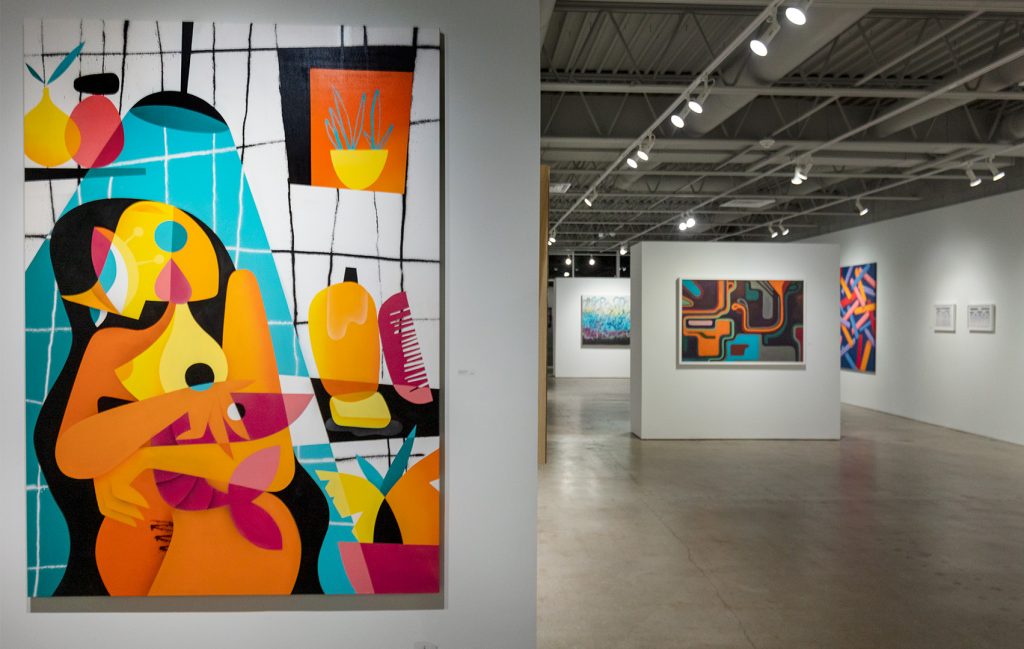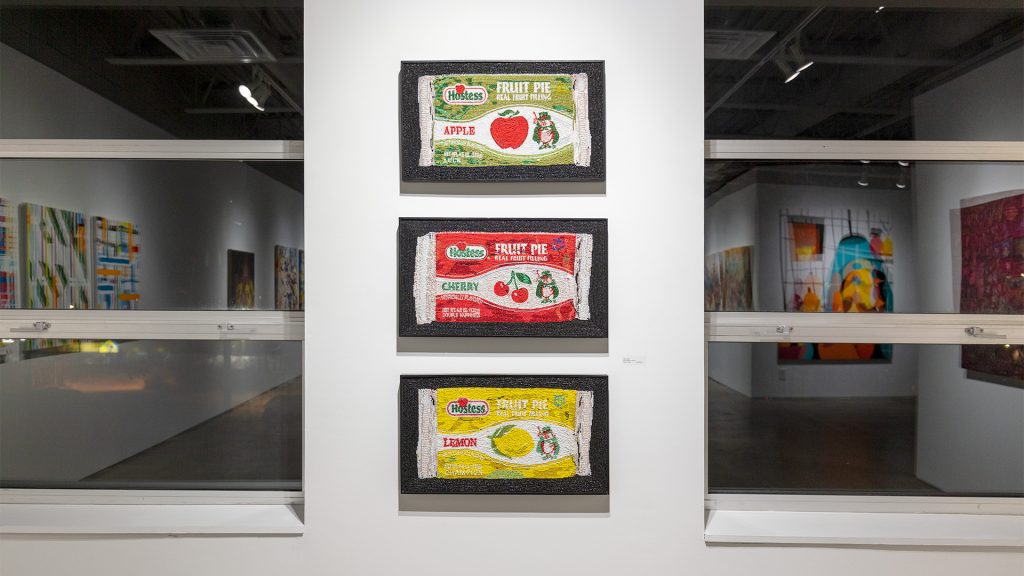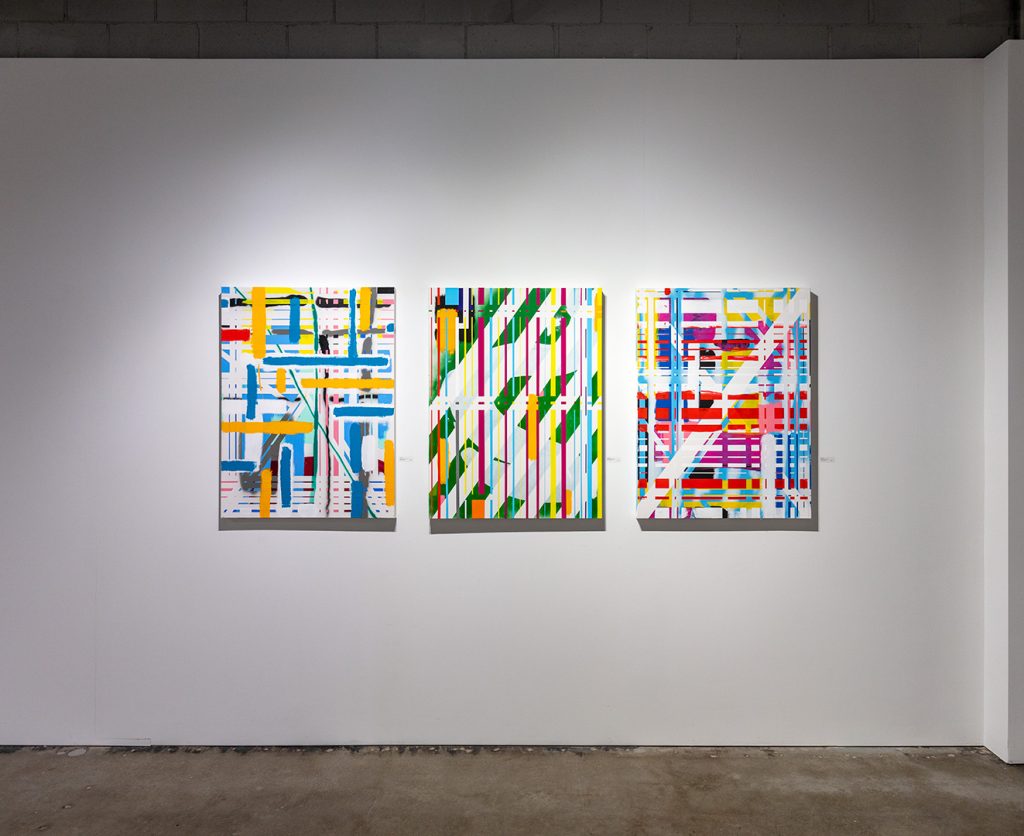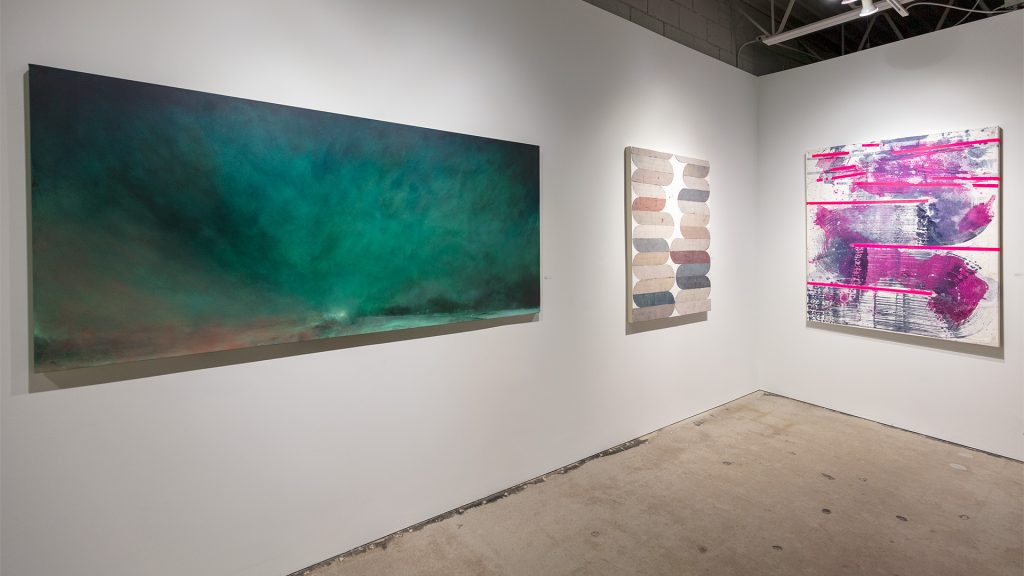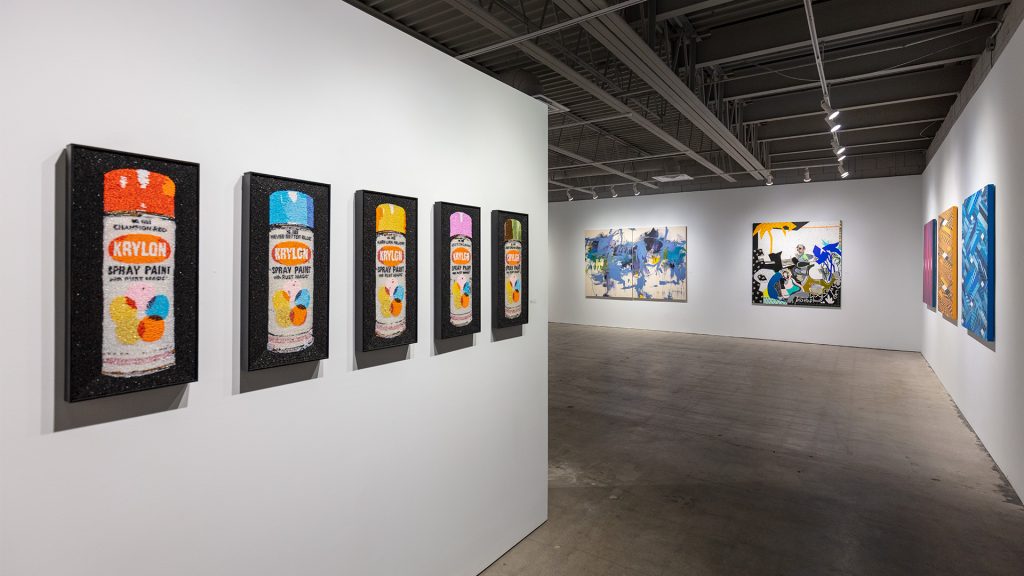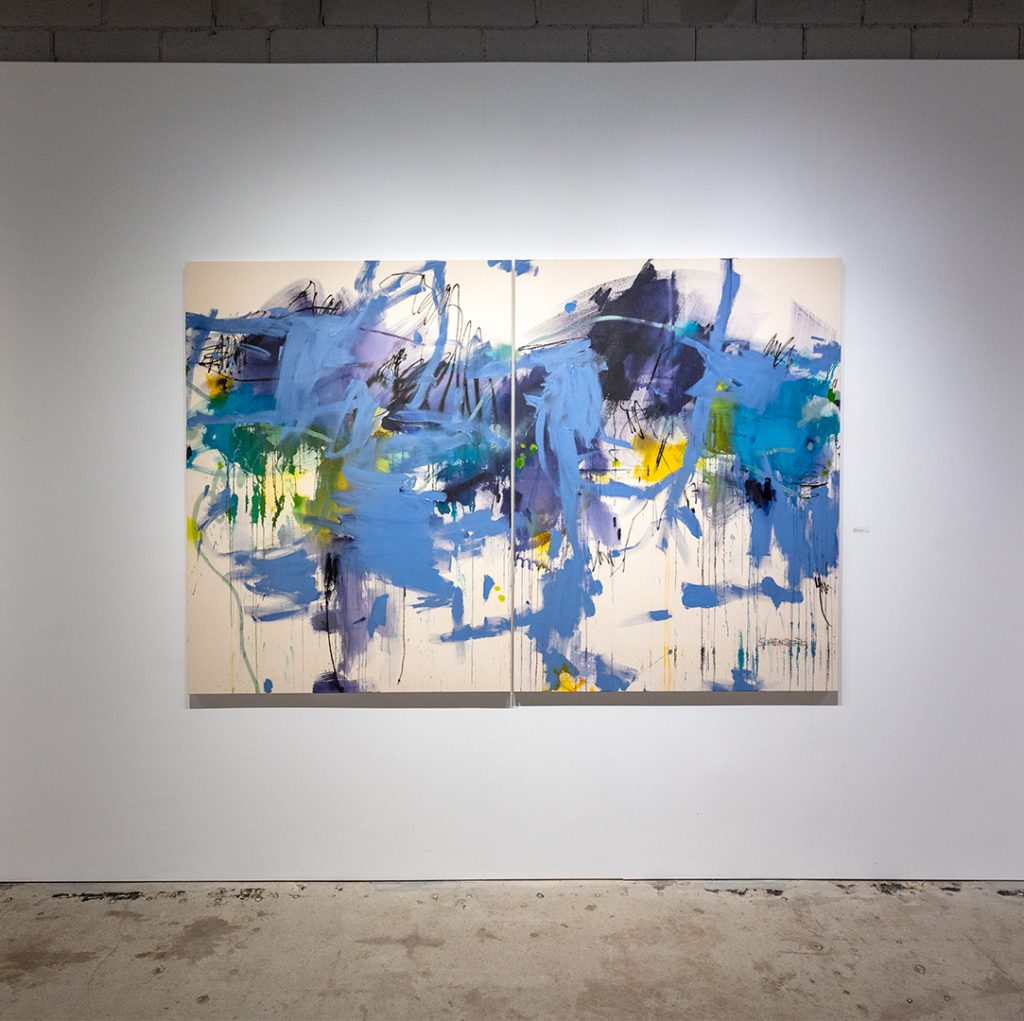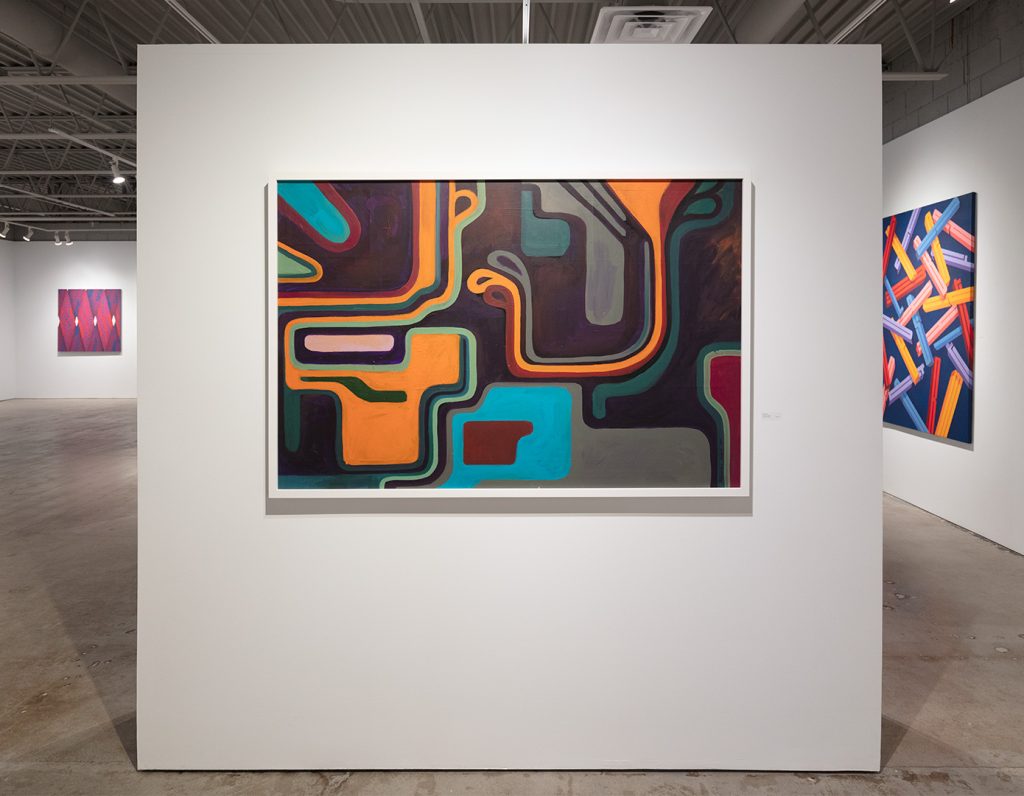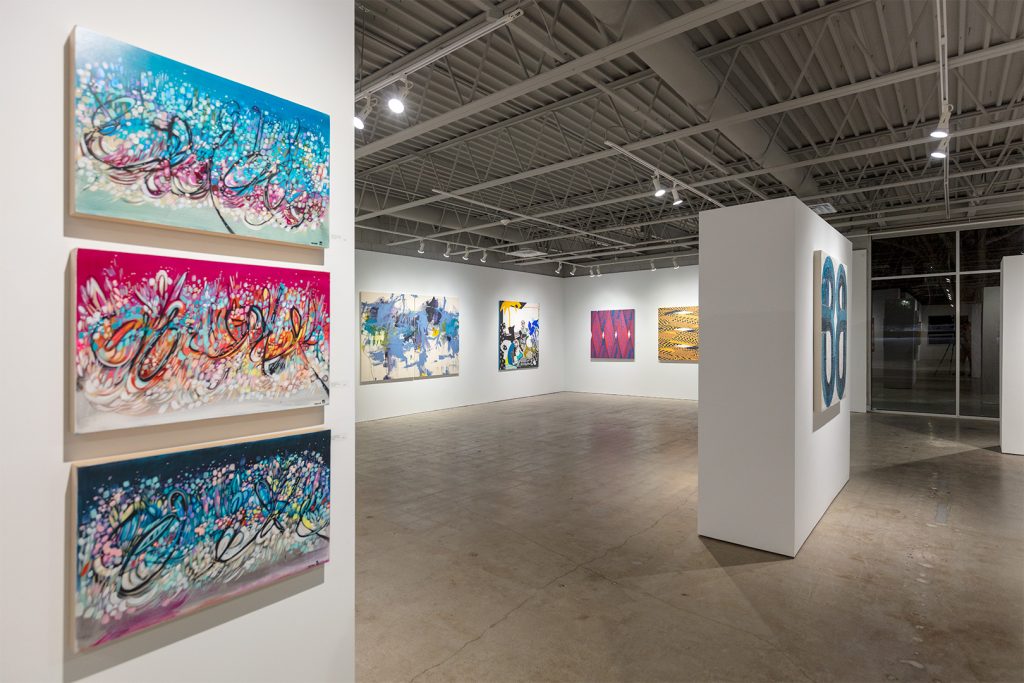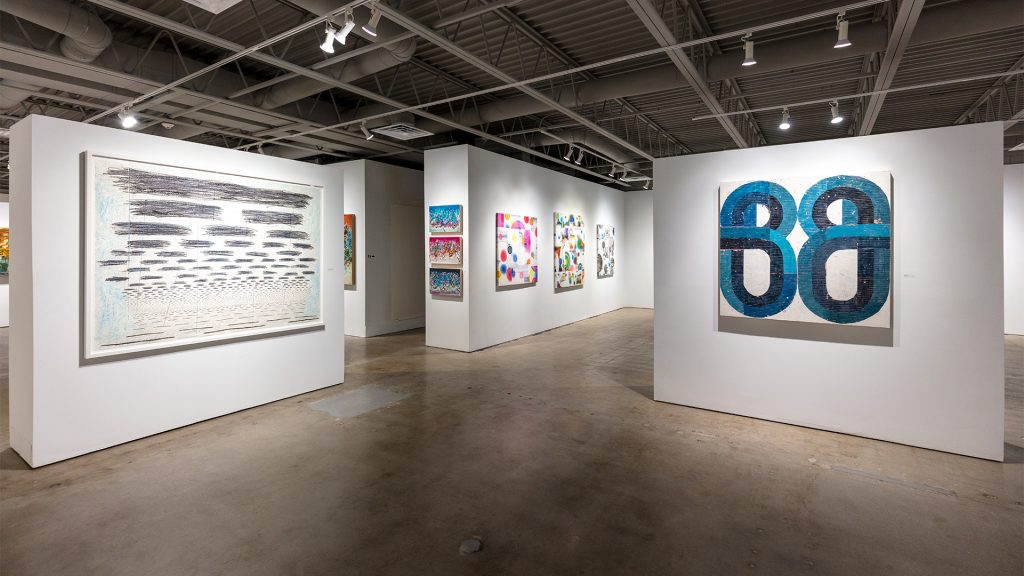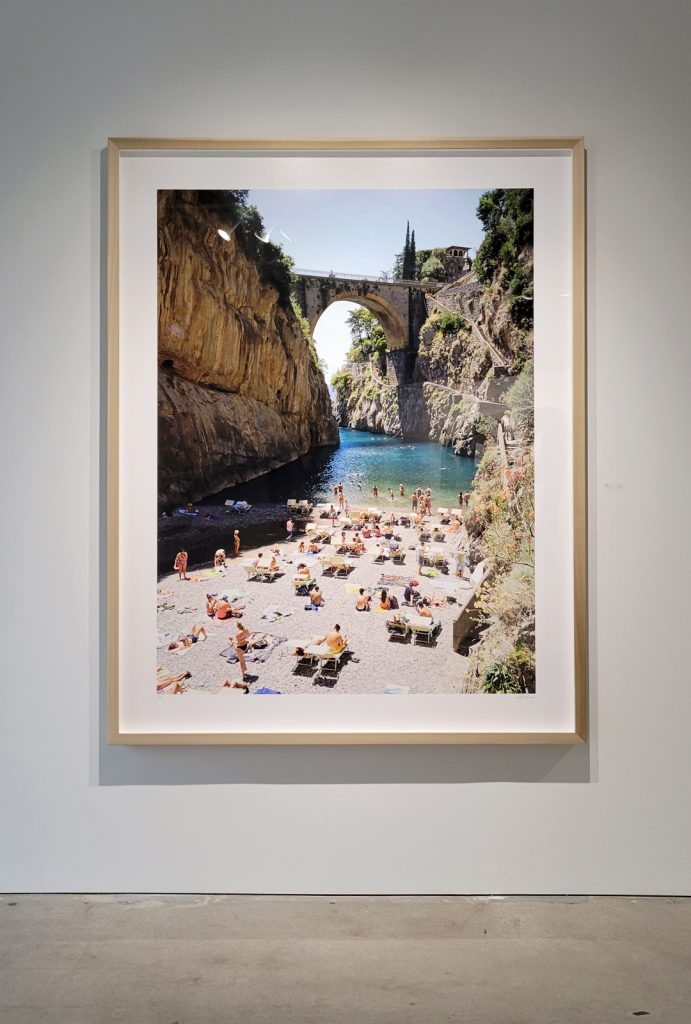TEXT BY MICHAELA MULLIN | VIEW IMAGES | SHOP ARTWORKS
Never Better Blue
(Title appropriated from Electric Coffin beaded work)
We are used to the predictable unpredictability of winter weather in Iowa, but we don’t let it get us down. So, Moberg Gallery has decided to have a blue winter with you, and by that, we mean the color blue—paint, beads, colored pencil—all in fantastic shapes, strokes, and stories.
Daniela Schweinsberg’s “Sanctuary,” is a fury of marks, making what emerges as a world map, its continental drifts as small excitements through the white of the canvas. The green and yellow nodes of what could be land, sea, or sky—all sanctuaries at different times for different reasons—meet and part to remind us that yellow and blue do make green. As we approach a new year in this world map we live literally upon, may the greener moments expand just across the threshold of its eve.
Derrick Breidenthal’s “Four Roads” continues this reminder—that atmospheric color of light and air, condensation and climatic shifts all swirl around and ahead of us. Using his small glimmer of light as vanishing point in a landscape held down lovingly by big sky, Breidenthal pauses the viewer in a position of fixed travel (the most beautiful analog simulator there could ever be), somehow maintaining the same awesome perspective while feeling like the wide open is closing in and that proximity is ever distancing.
Kathranne Knight’s three new works are sweeping and spare and create a small series of diagonal drawings that also operate as diagnostics of paper space. “Locator” is large—which gives the mind a sensible project. “Grounded Diagonal” and “Diagonal as Weather (after Hiroshige)” are small windows from which the viewers watch lines change direction, watch the clouds let loose rays, watch trajectories that move through horizontal seascapes, meeting multiple coordinates. Knight masters linear momentum in these blue and black works.
The encaustics on birch wood panels by Marissa Voytenko are portraits of geometric shapes curving and u-turning to make and follow their own tracks. “Face to Face” and “Parallel Paths II” give the viewer textual treads with which to connect, and the muted colors operate as a loved one with their finger to their mouth, imploring us to shhhhhh, to look it in the eye, to follow it. Not much convincing is needed.
Jason Woodside’s new “Hex” series— of Seaglass, Blue Red, and Midnight Orange, offer strips of pattern—dots and lines—to cordon off the cordoning. The ribbons of color fill the canvases, repeating and crisscrossing, creating small white glimpses at the edges of the work.
Jeffrey Glossip’s three new works, “2022.447, .453, and .456,” are woven lines of color, cutting off, moving under, weaving over. These mixed-media artworks make dimension, make structure that appears as scaffolding around something in repair—until we recognize an almost Centre Pompidou-like architecture happening.
Alexandre Shiffer paints tunneling. These two new paintings, “Pipe Works” and “Orangesicle” work like color blocking gone all Dig Dug. They are playful compositions reminiscent of the iconic Massimo Vignelli’s 1972 NYC Subway map, and though there will be no Helvetica found here, the color contrasts and the routes made and taken in Shiffer’s tunnels are multiple paths you’ll want to follow over and over again.
Sarah Grant’s “Sitting Duck Birds in Flight,” “Migration,” and “Unraveling Nets and a Hole in the Bucket” are large canvases of ontological deliberation. Between and among the three, both in style and subject matter, there are multiple narrative arcs. Not that it was Grant’s intention to tell one, or even three, particular stories. But her paintings are insistent emergences that so often give good story—of the intertwined state of being that is movement. Movement requires sustained speed, then deceleration, pause, acceleration, et al. We are all in these ever-shifting gears, and thus our witnessing moves in similar ways. And Grant’s palette has found a softness that still asks to be emboldened at times; visibility and invisibility are in constant dialogue.
Gina Ochiogrosso works in acrylic ink on pieced and sewn muslin. The stretched fabric, though taught, feels to the eye to be soft, wrapping and holding the ink shapes on it carefully. “Now You’re Talking” “Relocate,” and “Float,” have circles met with lines, circles made with lines, and a kind of non-reflective backscatter, like orbs of colored light or balls of water waves, contained within a ship’s portholes.
In Lisa Ashinoff’s “Bicheno,” there is no devil to be found in the details but there is intricate lineal work of a Tasmanian town, where houses proffer houses, unburden trees that hold up sky, where sky has faint visual echo of other buildings, other scapes and shapes. It’s modernism gone contemporary—where every shape is outlined boldly, haloing the contours of the structures on a street in a town on an island off a coast.
Chris Vance’s “Magic” is a taste of the very new in Vance’s evolutionary portfolio—it is a centralized tornadic movement, but it demands space—white space. And Vance abides. “Starry Night Vibe,” and the other large-scale fuller works, contain waves that are simultaneously whole and particle-ized. Vance’s macro and micro gestures contain curling to build and spiraling to undo.
“Untitled” and “Bougainvillea,” by Jeffrey Thompson, are two new paintings that one imagines are softly glowing in a dimly lit room. The ambient quality of so many of Thompson’s work makes one think of the gloaming time—the lights go down as evening approaches, and this transition offers a warmth that invites the viewer in—in to see the petals and veins, subtle and bold color.
Andrew Abbott’s work has not calmed down with age, thank goodness. The age of the artist of course, because these works are new and just as packed and colorful and animated as ever.
“Stately Room in Red, Inspired by Matisse,” for example, is a flattened dioramic room in only slightly skewed perspective. There one will find many paintings within the painting, as salon walls hold the painterly subjects, top to bottom, side to side.
Troy House’s photograph, “Furore,” is an invitation that is perfectly focused and composed, as would it be from beckoning you onto the Italian beach from just below. It only briefly reminds of Gursky’s large-scale beach images, with their extreme drone-like aerial vantage. In “Furore,” the stone arch, the paths, the villa, the stair stepping up and down, the patch of sand, the shoreline with its small party of people—all serves to say, Welcome. You are welcome. To join.
Electric Coffin is a collaboration between Duffy de Armas and Stefan Hofmann, where they “explore truths of modernity and personal historical perspectives.” Their “Tasty Cakes” (like Hostess brand fruit pies—think Lucy Sparrow on shine) and Krylon spray paint can series of small bead works on canvas are tantalizing. Taking common commercial items and making them dazzle with such intricate work is a delightful investigation of late capitalism and consumer driven desires as well as practical supplies that call and respond to demand.
We hope life is a host/ess with the most/est to everyone this holiday season. May we ring in a new and more art-filled year in 2023! Stop in to see the show through the middle of January.
